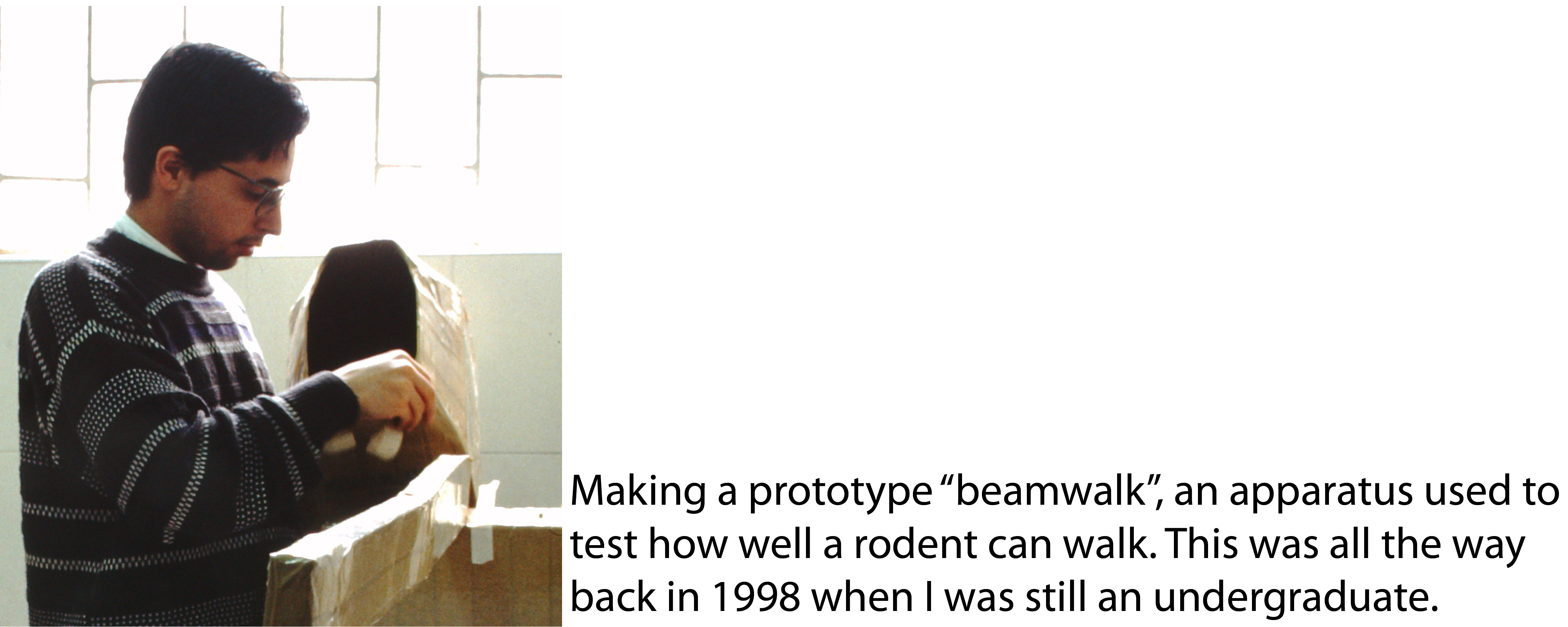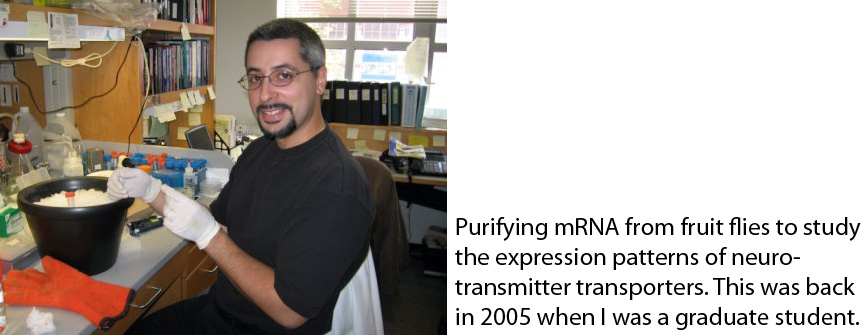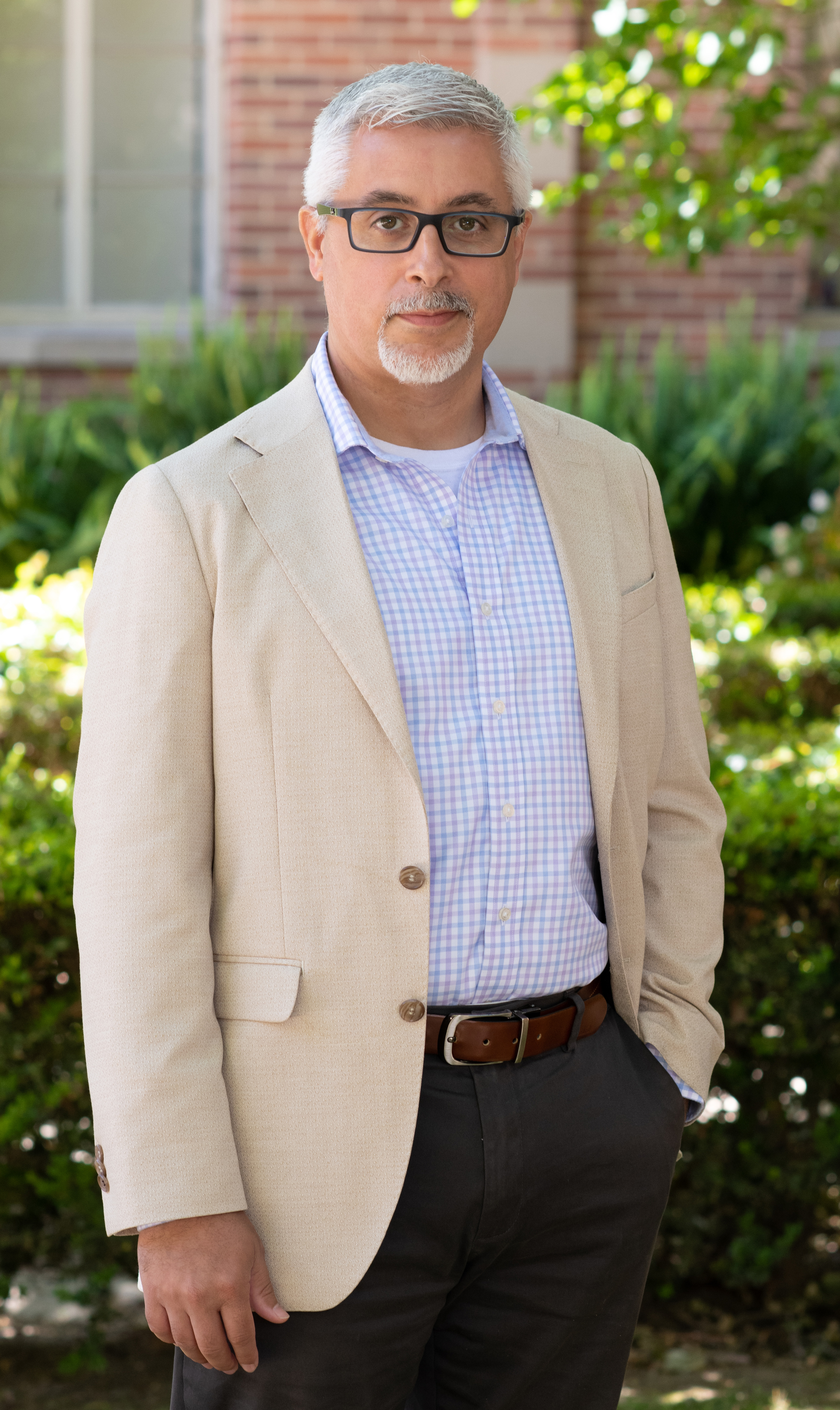I am currently the Associate Director of Program Development and Student Engagement for the undergraduate Neuroscience Interdepartmental Program (IDP) at UCLA, and the Assistant Director of Outreach for the Brain Research Institute (BRI). I am tasked with teaching preexisting courses within the IDP, developing novel courses to improve the Neuroscience Major, identifying funding sources to implement new projects and managing the outreach programs, namely Project Brainstorm and DOPA (Drug Outreach, Promoting Awareness) Team.
Previously I served as a Continuing Lecturer for the Molecular, Cell and Developmental Biology (MCDB) Department, also at UCLA. I exclusively taught courses for the Biomedical Research Minor, a unique program that recruits and trains promising undergraduate students that have expressed an interest in pursuing research as a career goal. Specifically, between 2007 and 2018, I taught and managed the flagship "deconstruction" course that introduces undergraduate students to the process of scientific research. This course, called Biomedical Research 5HA: Concepts and Strategies, exposes young students to high caliber scientific research and then "translates" or "decodes" the abstract concepts (something we called "deconstruction") to make real science approachable. I also taught an introductory anatomy course for pre-nursing students at Los Angeles Southwest College on Saturdays between 2007 and 2019, and an introductory biology course for non-science majors at Santa Monica College in the evenings between 2007 and 2021.
I am a bona fide full time educator, a decision that I consciously made (as opposed to becoming an instructor because all other options failed), but which was not immediately obvious during my academic training. Rather I entered pedagogy through a combination of planned career moves and fortuitous events. Here I will provide a detailed description of my personal and academic history.
I was born in Tucson, Arizona, but actually grew up in Madrid, Spain and in Los Angeles, California. While in Madrid I studied in bilingual schools, where I became fully bilingual in Spanish and English. My high school education was completed in LA, and it was here that after much thought about what I wanted to study in college I decided to become a biologist. Due to family considerations I moved to Bogotá, Colombia where I ultimately earned my degree in Biology from the University of the Andes. While working on my undergraduate degree I had the opportunity to volunteer in a research laboratory, an experience that opened my eyes to scientific research and eventually led me to apply to graduate school. My undergraduate research focused on understanding how stem cells and growth factors might help the brain heal itself after physical injury. Here I learned how to generate a lesion in the motor cortex of rats, causing them to have a motor impairment. Afterwards I would graft combinations of stem cells and growth factors to see how effectively we could reverse the motor deficits. This experience culminated in a thesis that earned me my Bachelor of Science degree in 1998, and in my first scientific publication in 2000.

After finishing college I was still unsure whether I wanted to commit to graduate school to earn a PhD so I took two gap years to make this decision. As I pondered my future I found a job teaching English as a second language, and given that I had a school loan to pay I took it. In case you wonder why teach English rather than biology, it was much more lucrative. There was a great demand in Bogota to teach English to business people and they were willing to pay handsomely for this service. Unbeknownst to me, this ended up being one of the most enlightening experiences in my life. During these two years, not only did I discover that I had a proclivity to teach but I also learned that science was my true passion. Incidentally, I comfortably paid off my school loan and I met my wife as a direct result of teaching English so this really was a watershed moment in my life.
Once I realized that I wanted to make science my full time career and that maybe I should incorporate teaching into my long term goals, I made the decision to apply to graduate school. After a full year of preparing the paperwork (and studying for the GRE) I applied to a few different schools in the US. In the year 2000 I got accepted at UCLA to pursue a PhD in Neuroscience and so started a six year training process that made me an expert in molecular neurobiology. My research during graduate school focused on studying a group of proteins known as neurotransmitter transporters, proteins that are responsible for recycling the molecules that neurons use to communicate with one another. Much remains to be learned about how these proteins work as well as how cells regulate them, so it was easy to come up with a research project that would ultimately lead to a doctoral dissertation. Importantly, I did not directly study human neurotransmitter transporters, but rather I used the fruit fly (known to biologists as Drosophila melanogaster) which is a very popular animal model used to study everything from development to disease. More specifically my thesis focused on finding new transporters in the fly that would serve as better molecular models to study their function and regulation. This was a wonderful experience that trained me to become a scientist and allowed me to publish half a dozen papers describing my findings.

But recall that I also wanted to integrate education into my training, so during my graduate school training I concurrently started working as a teaching assistant for some of the introductory neuroscience courses taught by the undergraduate Neuroscience IDP at UCLA. Eventually I transitioned to the Center for Community Learning (recently renamed as the Center for Community Engagement) where I became a part-time academic coordinator helping undergraduate science students find volunteering opportunities where they could apply the knowledge they were acquiring in the classroom. As part of my job I was asked to develop an experience that would be applicable for undergraduate neuroscience students and so with the help of several colleagues I came up with what we now call Project Brainstorm. Initially a simple course designed to give undergraduate students some teaching experience it has now evolved into a full blown course at UCLA that trains neuroscience undergraduate students to teach K-12 school children about the human brain. To this day this remains one of my biggest pedagogical achievements.
By 2007, year in which I earned my PhD, I was ready to join the workforce. As chance would have it, right at the same time, UCLA was looking for a new, full-time instructor to teach for the newly created "Minor in Biomedical Research" and so I readily applied. However, knowing that by no means this job would be guaranteed (after all, other highly qualified people would surely apply as well), I also sent out applications to community colleges throughout the LA area. What happened in the following two months ultimately led me to teach in three separate campuses for over a decade, something that helped define my professional career.
Santa Monica College (SMC) was the first to contact me as they needed a new part-time instructor to teach Biology 3 (general biology for non-biology majors). I interviewed with SMC and expressed my interest but with a small condition: that I teach an evening course just in case UCLA offered me the full-time job and I would need to be available during regular teaching hours. SMC agreed and so I signed a contract to start teaching in the fall of 2007. About two weeks after this, UCLA called me for an interview, and by virtue of my combined research and teaching experience, decided to make me a formal full-time job offer to become a Lecturer for the Molecular, Cellular and Developmental Biology (MCDB) Department. I would start working at UCLA during the summer, and having a commitment to teach at SMC starting that fall, I thought I would be busy enough. But this was not the end. I got a surprise call during the summer of 2007 from Los Angeles Southwest College (LASC) as they were desperately looking for a new Saturday anatomy instructor. Their previous instructor had abruptly quit a few weeks before the start of the semester and now they were scrambling to find a replacement. It was two weeks before the start of the semester and I knew that if the college could not find a new instructor now, they would have to cancel the class and dozens of students would be affected. Never one to shy away from challenges, I decided to teach the course with such short notice, and on top of all my other teaching responsibilities. This is how I ended up working at three different places at the same time.
For over a decade I continuously taught in these three campuses, often against the advise of my colleagues. Indeed teaching so many classes was physically taxing, not to mention time consuming, but there was a reason to my madness. The truth is that by teaching at all these campuses simultaneously, I got to experience firsthand how different the student populations were between these schools. Within the first year I realized that I was in a unique position of teaching students from all the diverse socioeconomic and ethnic backgrounds that make California the multicultural state that it is. As an educator I found this hard to resist, and the rest is history.
SOME FUN FACTS ABOUT ME
-
I have never tweeted anything in my life, nor followed anyone on twitter. I'm not sure why. I think I have never seen the need so far.
-
I studied the introductory courses for my PhD with two celebrities, who happened to start their PhD the same year I did. The first is Sam Harris, best-selling author of several books, most notably "The End of Faith", and the second is Mayim Bialik, best known for her portrayal of Amy Farrah Fowler on "The Big Bang Theory" (2007-2019).
-
In my free time I have self taught myself to cook fancy dishes. I discovered that it was a fun challenge to order different plates at a restaurant and then try to recreate them. Some dishes I have perfected include: sautéed mushrooms in a sherry reduction, ceviche in lime, coconut and miso juice and steamed mussels in a garlic and white wine broth.
